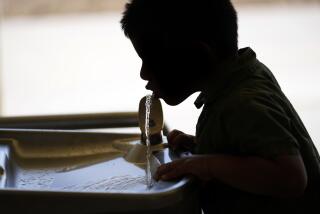Deep Study of Radon Risks Advocated
Sen. Bill Bradley (D-N. J.), a tall former pro-basketball star, is best known in the nation’s capital for his effective behind-the-scenes work to make tax reform a reality.
But Bradley, the erudite Princeton graduate who studied in England before playing for a championship N. Y. Knicks in the early 1970s, recently gave emphasis to a new cause. Bradley has urged the Department of Energy to allocate more resources to study health risks associated with residential exposure to a gas called radon.
In seeking more effort to make homes less susceptible to radon exposure, Bradley told the Committee on Energy and Natural Resources that we “still have little understanding of the health risks of indoor radon exposure.”
What is radon? It’s a byproduct of decaying uranium in the ground. This gas may be present in 3 million or more homes in varying degrees in varied areas of our nation. It poses a serious threat only when high levels of radon seep into houses through well water, cracks in a foundation, sump or heat pumps, spaces around drainage pipes and microscopic fissures and pores in some masonry basement walls.
The main threat, according to housing observer Edwin L. Stoll, is that radioactive decay products become attached to dust particles and other surfaces. When those particles are inhaled, they can cause lung cancer.
Bradley cited statistics from the federal Centers for Disease Control indicating that radon-related lung cancer may be killing 30,000 Americans annually. “There is no consensus on how much radon the public should tolerate,” Bradley said. “The little research done on residential radon exposure is contradictory, with some studies finding ties between indoor radon and lung cancer . . . and some not.
“One theory holds that children are more sensitive than adults to radon exposure. Other scientists speculate that children are in less danger because their bodies have more time to repair radiation damage before the onset of lung cancer.”
In addition, Bradley pointed out that the Department of Energy’s Office of Energy Research has sponsored radon-related research for decades, including a study of uranium miners in New Mexico. Bud Bradley contends that altogether the radon research has not produced “predictive principles” needed for policy decisions.
Of special concern to the senator is the hazard in eastern Pennsylvania and New Jersey. A ridge of granite spikes with uranium extends from Reading, Pa. (about 70 miles northwest of Philadelphia), through New Jersey, and into Suffern, N.Y.
Discovery of cancerous concentrations in homes along that geologic formation stirred broad concern. Radon also has been spotted in Polk and Hillsboro counties in Florida, an area where homes were built on land formerly mined for phosphates.
Even affluent, fast-growing Montgomery County, Md., which begins only about 10 miles north of the White House, recently got upset and made tests disclosing that more than 40% of homes had radon levels exceeding the action level established by the Environmental Protection Agency. Radon test kits are now available, and houses with substantial radon amounts can then be “radon proofed.”
Radon problems and threats affect builders and professional house brokers and agents. Already the Pennsylvania Board of Realtors has decided that its members have an obligation to inform potential buyers when radon may be a problem, and then allow buyers to require a test as a contingency of sale.
More to Read
Sign up for Essential California
The most important California stories and recommendations in your inbox every morning.
You may occasionally receive promotional content from the Los Angeles Times.










